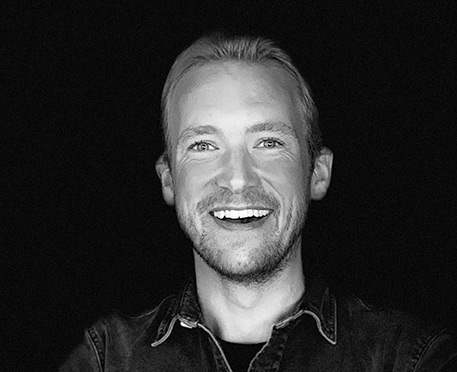The Agile Road to a Minimum Viable Product
In our blog about rapid prototyping we already touched upon the topic of the Minimum Viable Product, or MVP. But there is much more to it than just a phase of conceptualisation and solution defining. This blog dives deeper into the ins and outs of the MVP, and the process of creating an MVP towards the eventual delivery.
The MVP explained
The general definition of a Minimum Viable Product is a product that has just enough features to satisfy its early users and receive feedback for future development. While keeping further development and improvements in mind, the essence of an MVP is the delivery of a product with only the most essential features. By scaling your product down to a small set of features needed to meet the goal of the application, you not only save time and effort, you also reduce the risk of customer dissatisfaction with the end-product. The MVP fits perfectly into the mindset of a Lean Startup, using Agile methodologies. Because the action of creating and improving an MVP is an iterative process, concepts are continuously being tested and improved, based on the feedback of its end-users. An MVP must be usable and functioning at every stage of creation, and aims to become more complex and efficient at each iterative sprint. For example, a customer asks for a product which provides comfort while sitting down: a chair. To prevent the risk from designing and developing a chair with an overload of features the customer didn’t ask for, you start off with something much less complex, but still following the needs of the customer. You begin with the basics: four legs, a seating, and a backrest, using the most basic materials. Once built, you put your chair on the market, and see how your customers experience the use of your product. If they approve, you can decide to make your chair a bit more comfortable, or good looking, depending on the feedback of your customers. The next version has an added set of wheels, and the one after that a comfortable seating and backrest. And eventually, after building up a decent amount of features, you end up with the concept of a chair that appears to be exactly what your customers asked for: comfortable, and functional.

Often, there are quite a few misconceptions about how this process of developing MVPs looks like. Important to keep in mind is that, during the entire process from first to last version, the first version of the MVP will always be the foundation for later versions. There are no features that get removed and replaced along the way, every new version is built upon the previous version. Another misconception about MVPs is the fact that it often gets confused with the definition of a prototype, but there are clear distinctions between the two. In our blog on rapid prototyping we touched upon the topic of prototypes, and how they form an essential part of agile software development. The main difference between a prototype and an MVP is the fact that an MVP is market-ready, and appears much later in the process of product development. It’s much more developed than a prototype, and meets all the necessary requirements to enter the market.
MVP
An MVP is a product with a minimum amount of features that are needed to access the market and provide ready-to-use functionalities for its target audience. It’s a version of a new product that allows its creators to collect a maximum amount of validated learning about its target audience and end-users with the least effort. You produce an actual functional and market-ready product, which could be no more than a single landing page with a limited amount of features. It’s enough to let your customers have a taste of the product, and let you observe their behaviour. This behaviour lets you gain understanding about the interests and experiences of your target audience, without the effort developing a product that’s packed with features and functionalities. This makes an MVP very cost-effective, with a higher chance of satisfying the customer in the end. Typically, an MVP appears at the end of an Agile scrum sprint. From there, feedback from the end-users give insight into what functionalities add the most value to your target audience. These essential functionalities are then put on top of the product backlog as priority features. The Product Owner then decides what features are qualified to be implemented in the next version of the product, and if there’s a need for additional features to improve the user experience of the product. In short, an MVP can typically be described as:
- A bare-bones, functioning and market-ready product addressing its end-users’ core problem
- A method for gaining viable user feedback with the least effort possible
- A method that addresses a larger pool of users, gaining more valuable and realistic feedback than with a prototype

Prototype
Opposed to an MVP, a prototype is generally non-functional, and non-standalone. A prototype is not near being ready for the market, whereas an MVP is. Prototypes can be described as sketches and drafts building up towards an MVP. Although there are interactive prototypes, they are normally not built upon code yet and therefore, not automated. Because prototypes don’t involve the hassle of writing code, it fits the Agile character of a Lean Startup. You can see a prototype as the first chair in the process of developing an MVP for a comfortable and functional chair. It’s the first draft on which improvements are built along the way, based on how users experience the main function. Prototypes can be described as:
- Typically non-functional, not a standalone product, and not market-ready
- A tool for generating ideas before developing and demonstrating the concept
- A key building block for the construction of an MVPs
From idea to MVP
The process from turning an idea into a Minimum Viable Product involves a lot of interaction between the creator, end-users, and the product. Because the whole concept of MVP revolves around iterative testing and implementing feedback, contact with your customers is essential. The road towards an MVP can be divided into 9 steps, that aren’t necessarily bound to a specific order.
-
Define the problem Think of the general problem you are facing, and how this problem relates to the ideal end-situation. What problems need to be solved in order to be able to create a valuable MVP?
-
Identify your end-users/target audience In order to gain insights into how your product should look like, you’ll have to know who you’re making the product for. Think of a certain age group, or a group with a specified gender, occupation, lifestyle, etc.
-
Understand your end-users/target audience Design thinking plays a significant role in understanding your target audience. Once you’ve gained a clear insight into the behaviour and interests of your end-users by the means of empathy, you can start formulating fitting solutions.
-
Validate the problem Precisely defining the problem allows you to validate it with all involved stakeholders. In order to do this, study your potential end-users and document how they are affected by the problem.
-
Create a draft of potential solutions This is the stage where prototypes come into play. When all problems are gathered, you can start thinking of possible solutions, and how they can be implemented into your product. There are quite some tools on the market that can help you efficiently draft prototypes.
-
Define the product The next step is to define a complete product in User Stories, with a product backlog. In this backlog you describe everything your end-product has to possess: all functions and features, without thinking of limitations yet. Go for the full picture, so later you can prioritize the individual elements.
-
Define your MVP While defining your MVP, rank your User Stories based on priority. Scale down to only the most essential features, and base your MVP on these few functionalities. Imagine your product on the market: what functionalities are essential to provide value to its end-users? And what features can be postponed for later improvements and updates?
-
Define your KPIs By now you have a solid problem statement and a precise understanding of your audience, the market, and the technology opportunities, together with an ordered product backlog. Identifying Key Performance Indicators help you reflect the performance of your product, and the way it should function.
-
Begin the development process Once you’ve planned out possible solutions, and defined the goals you want to achieve, it’s time to start the process of development and turn your MVP into a physical market-ready product.
MVPs at Lizard Global
At Lizard Global, we work Agile. Creating MVPs is an essential part of the Agile development process.. We aim to implement methodologies that ensure the success of a developed product using Lean Startup methodologies. By using regular Agile sprints, to create MVPs, we are constantly aware of the position of our products on the market and are constantly getting user feedback to improve those products in an efficient and cost-effective manner. In order to achieve quality, there is a need for quantity - quantity of feedback, quantity of metrics, and quantity of backlog features. We do this with continuous iterative defining, creating, testing, and implementations of feedback. This iterative process of developing MVPs contributes to the process of so-called validated learning, which helps us develop a user-centered product that is perfectly aligned with our customers’ needs. All this is done with a close eye on cost-effectiveness and performing the least possible effort with maximum results. Curious about how we support you with creating an MVP for your product? Contact us on our social media channels and our website.






